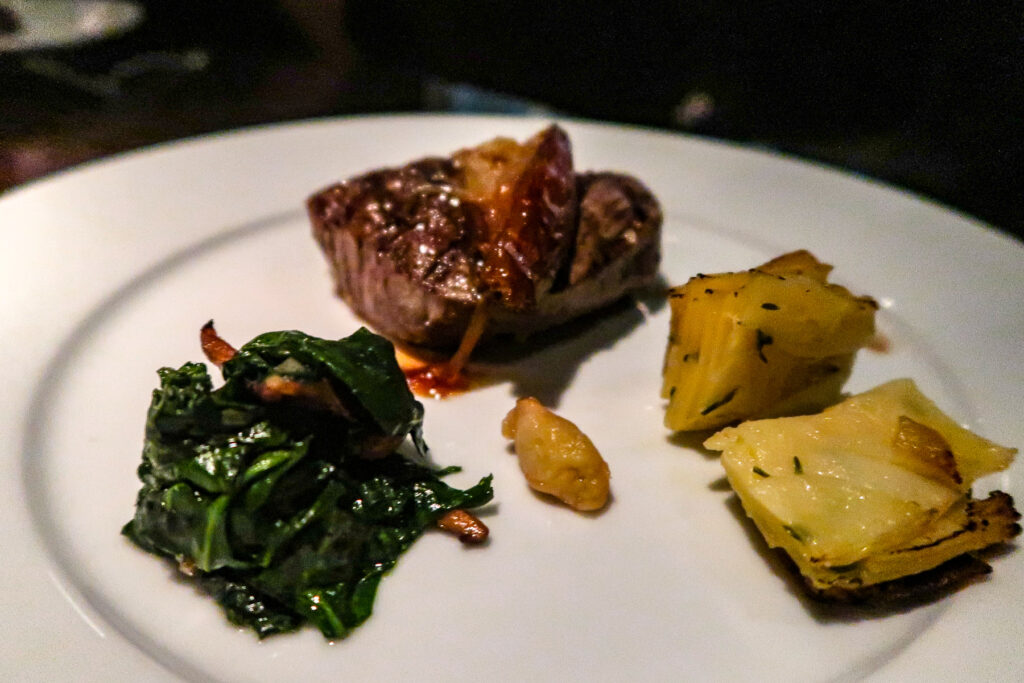As the world becomes increasingly aware of environmental issues, the concept of sustainability has never been more crucial, especially in the restaurant industry. Adopting sustainable practices not only benefits the planet but also enhances your restaurant’s reputation and can lead to cost savings. This guide will explore practical steps for creating a sustainable restaurant, from sourcing ingredients to managing waste. Whether you’re a seasoned restaurateur or a passionate graduate from chef school, these tips will help you on your journey to sustainability.
Your Easy 6 Step Guide To Creating A Sustainable Restaurant
Source Locally and Seasonally
One of the first steps towards a sustainable restaurant is sourcing your ingredients locally and seasonally. This practice reduces carbon emissions associated with long-distance transportation and supports local farmers and economies. Moreover, seasonal produce is fresher, tastes better, and is often more nutritious, which can elevate the quality of your dishes. For aspiring chefs fresh out of chef school, building relationships with local suppliers can also provide unique ingredients that set your menu apart.
Local sourcing also means adapting your menu to the seasons, which can be a creative challenge but also an opportunity to constantly surprise and delight your customers with new, fresh dishes. This approach not only reduces your carbon footprint but also educates your patrons about the benefits of eating seasonally and locally.
Embrace Sustainable Products and Services
Incorporating sustainable technologies into your restaurant can significantly reduce your environmental impact. For instance, energy-efficient appliances can lower energy consumption, while water-saving devices reduce water usage. Another innovative approach is partnering with an insect farming company to manage organic waste. Insect farms, like Flybox, offer a dual solution: they process food waste to produce high-quality protein for animal feed and other byproducts like fertilizer, thereby closing the loop on food waste in a sustainable manner.
Insect farming is a cutting-edge solution that transforms a problem—organic waste—into valuable resources, demonstrating a commitment to sustainability that can inspire both staff and customers. By integrating these technologies, restaurants can not only minimize their ecological footprint but also lead by example in the industry.
Waste Reduction and Composting
Waste reduction is a cornerstone of sustainability in the restaurant industry. Strategies such as portion control, menu planning, and donating surplus food can significantly decrease waste. Additionally, composting organic waste not only diverts it from landfills, where it would release methane (a potent greenhouse gas) but also provides nutrient-rich soil for local agriculture.
Implementing a composting program requires some initial effort, including staff training and establishing a system for separating waste. However, the long-term benefits for the environment and the potential to collaborate with local farms for soil enrichment make it a worthwhile investment.
Sustainable Interiors and Operations
The physical space of your restaurant also offers opportunities for sustainable practices. Choosing sustainable materials for furniture and decor, using non-toxic paints, and incorporating live plants can improve air quality and reduce the environmental impact of your interiors. Similarly, adopting digital menus and receipts can significantly cut down on paper waste.
Operational practices, such as reducing energy use by optimizing heating, cooling, and lighting, further contribute to a restaurant’s sustainability. Even small changes, like using cloth napkins instead of paper or providing filtered water rather than bottled, can make a difference.
Engaging and Educating Your Community
Sustainability is not just about internal practices; it’s also about engaging and educating your community. Host events or workshops that promote sustainable living, collaborate with local environmental organizations, and actively share your sustainability journey with your customers through social media or in your restaurant.
This engagement not only builds a loyal customer base that shares your values but also encourages others in the industry to adopt sustainable practices. By leading through example, you can create a ripple effect that extends far beyond your restaurant.
The Future is Green
Creating a sustainable restaurant is an ongoing journey that requires commitment, creativity, and community engagement. By sourcing locally, embracing sustainable technologies like insect farming, reducing waste, optimizing your operations, and engaging with your community, you can make a significant impact. These practices not only contribute to a healthier planet but also offer a competitive edge in the increasingly eco-conscious market. As we move forward, sustainability in the restaurant industry is not just a trend—it’s a necessity for a greener future.





